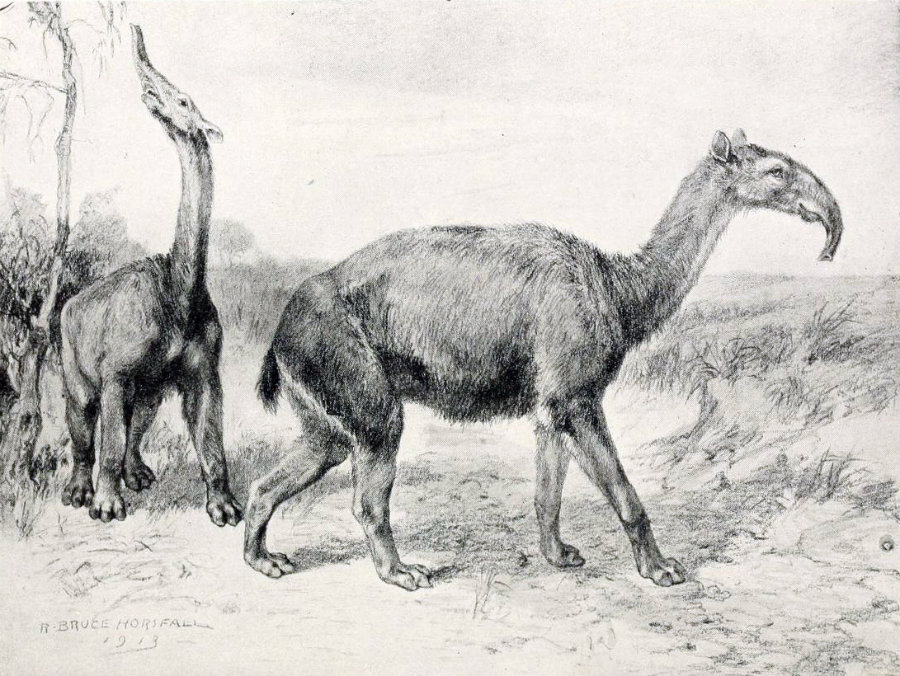Scientists used DNA to solve an ancient animal riddle that Charles Darwin couldn’t. After the last of its kind died more than 12,000 years ago, a strange animal that baffled Darwin is finally being added to the tree of life. The findings were published this week in the journal Nature Communications.
Macrauchenia patachonica was an animal that lived during the last ice age, and it resembled a big camel without the hump, with a long llama-like neck and a short trunk for a nose.


Researchers believe that the long neck enabled the herbivore to reach leaves on plants and bushes across South America and the open landscapes of Patagonia, in what is now Argentina.
Researchers solved mystery that Charles Darwin couldn’t
According to Ross MacPhee, the study’s co-author and curator at the American Museum of Natural History, the animal was a relatively bulky quadruped, probably not very fleet of foot.
“Its outstanding feature, however, was its nose,” said MacPhee, according to CNN. “We have no soft tissue fossils, so we don’t know whether the nose was developed into an actual trunk, like an elephant’s, or was something more like a big fleshy appendage, resembling the tapir’s proboscis. It would not have looked very much like anything alive today.”
The nasal opening was located right between the eye sockets, rather than just above its teeth. British scientist Darwin first found a fossil of the creature, along with fossils of other animals that fall under the “South American native ungulates” category, in 1834.
The fossils were handed to Richard Owen, a British paleontologist, to study them. However, neither Owen nor Darwin could clarify the animal’s combination of features to a modern-day counterpart or a particular mammal lineage. But, to give some credit to Darwin and Owen, they only had a few limb bones and vertebrae to analyze.
The researchers used DNA to find Macrauchenia’s spot in the tree of life
The ungulates group itself is baffling to researchers because some of them look elephant-like, while others look more like aardvarks and moles. Owen even employed an old name for the llama to come up with the genus Macrauchenia.
“What we knew for quite some time is that there is a large number of species that are put into this group, and many of them looked quite peculiar,” said Michi Hofreiter, lead author of the new study and paleogenomics expert at the University of Postdam, according to CNN. “They are all extinct, and we do not even know if they represent a single group or belong to different phylogenetic groups.”
The researchers built on a 2015 collagen study and extracted mitochondrial DNA from a fossil found in South America. They also used a new approach to recovering Macrauchenia’s genome. They found that Macrauchenia belongs to a sister group of Perissodactyla, which includes tapirs, horses, and rhinos. These groups split about 66 million years ago, around the time when an asteroid struck the Earth, and a mass extinction occurred.
“We now have found a place in the tree of life for this group, so we can now also better explain how the peculiarities of these animals evolved,” said Hofreiter, according to CNN. “And we lost a pretty old branch of the mammalian tree of life when the last member of this group went extinct.”
Source: CNN
